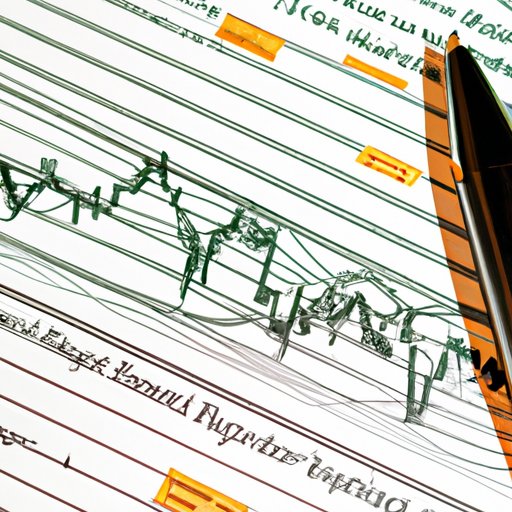Introduction
Inflation is a sustained increase in the general level of prices for goods and services in an economy over a period of time. It is measured as an annual percentage increase. When the inflation rate rises, each dollar you own buys a smaller percentage of a good or service. As a result, investors are often uncertain about the best way to protect their portfolios from the effects of inflation. While some may opt for cash investments or precious metals, stocks can also be an effective tool for protecting your portfolio against inflation.

Analyzing the Historical Performance of Stocks in Inflationary Environments
When analyzing historical stock market data, it is important to note that stocks have historically performed well during periods of inflation. The S&P 500 index has returned an average of 8.3% annually since 1950, regardless of whether inflation was rising or falling. This indicates that stocks have the potential to generate returns even in inflationary environments.
However, it is important to note that certain factors can affect the performance of stocks during inflation. For example, if interest rates rise due to higher inflation, this could lead to a decrease in stock prices as investors seek out higher yield investments. Additionally, companies whose products become more expensive due to higher input costs may see their profits decline, resulting in a decrease in their stock prices.
Identifying Sectors that Perform Well During Inflationary Periods
When investing in stocks during inflationary periods, it is important to identify sectors that tend to perform well. Technology, healthcare, and utilities are all sectors that have historically done well during periods of inflation. These sectors are generally less volatile than other sectors and provide essential goods and services that people need regardless of economic conditions.
Additionally, consumer staples and financials are two sectors that tend to do well during inflation. Consumer staples are non-discretionary items such as food and cleaning products, which people need regardless of economic conditions. Financials, on the other hand, benefit from higher interest rates and increased demand for loans.
Exploring ETFs that Invest in Inflation-Protected Assets
Exchange-traded funds (ETFs) can be used to invest in a variety of inflation-protected assets. US Treasury Inflation Protected Securities (TIPS) are government securities that are indexed to the inflation rate. As the inflation rate rises, the principal value of the security increases. Commodity ETFs are another option for investors looking to protect their portfolios from inflation. These ETFs track a basket of commodities such as gold, silver, oil, and natural gas, which tend to increase in value when inflation rises.

Examining Low Volatility Stocks that Thrive During Inflation
Low volatility stocks are stocks that tend to experience less price fluctuation than the overall market. Dividend paying stocks are a type of low volatility stock that offer investors additional income while providing protection against inflation. Value stocks are another type of low volatility stock that tend to do well during periods of inflation, as they are typically undervalued and offer investors the potential for capital appreciation.
Evaluating Commodities and Real Estate as Inflation-Proof Investments
Commodities such as gold and silver can be used as inflation-proof investments. Gold and silver have historically been seen as safe havens during times of economic uncertainty and can help protect investors against the effects of inflation. Real estate investment trusts (REITs) are another form of inflation-proof investment. REITs are companies that own and manage a portfolio of real estate properties and pay out a portion of their earnings to shareholders.
Researching Global Markets for Inflation-Resistant Opportunities
Investors looking to protect their portfolios from inflation should also consider researching global markets for inflation-resistant opportunities. Emerging markets such as India, China, and Brazil have experienced higher levels of inflation than developed markets such as the United States, Europe, and Japan. As a result, these markets may offer investors greater potential for returns during periods of inflation.
Conclusion
Inflation can have a significant impact on an investor’s portfolio, but there are strategies that can be employed to protect against its effects. By analyzing the historical performance of stocks in inflationary environments, identifying sectors that perform well during inflationary periods, exploring ETFs, examining low volatility stocks, evaluating commodities and real estate as inflation-proof investments, and researching global markets for inflation-resistant opportunities, investors can create a portfolio that is able to withstand periods of inflation.
(Note: Is this article not meeting your expectations? Do you have knowledge or insights to share? Unlock new opportunities and expand your reach by joining our authors team. Click Registration to join us and share your expertise with our readers.)
